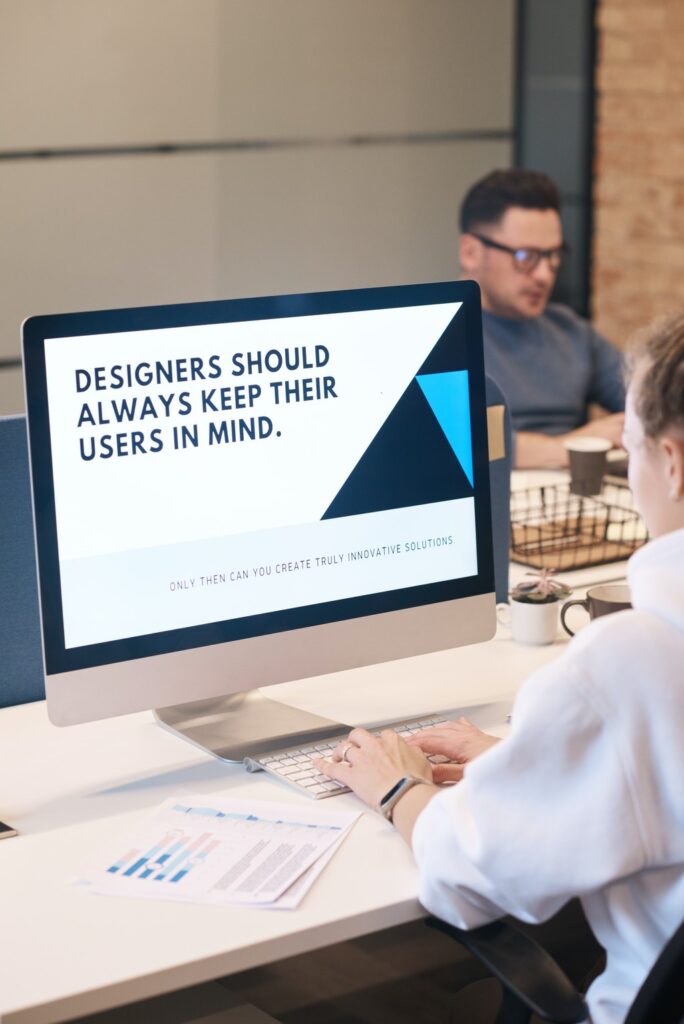
UI/UX are two most important aspects of contemporary web design and development. What UI factors must be considered when planning to create the optimal user experience?
Since the introduction of the Internet and the development of websites, the problem of retaining visitors, keeping them on the site and turning them into loyal clients or followers has been in the focus of web developers. What is the difference between the UI and UX, how they influence each other, and what are the perspectives for the future?
UI/UX: A Short History of Relationship
The term “user interface” came into being in the 1980s and has always concerned websites. Today, whether this is an e-shop, a blog, or a social network, they all care about how well the user can navigate their pages. It is a well-known fact that users want their information quick, and unless they get what they need, they move elsewhere – to a competitor.
The term “user experience” was coined a decade later when there were enough websites, and it became clear that a site is but a link in the long chain of transactions between the user and the brand. User experience came to define the entire complex of “interactions with the company, its services, and its products”. In other words, as much as the user would like to purchase the goods he saw advertised, he might not be able either to find a product on the site or pay for it. Thus, the user’s experience of the company will be poor because the company has failed to deliver the service.
It is perhaps self-explanatory that UI and UX are interdepending. Hardly can anyone imagine a positive user experience without a good design and an intuitive UI. However, this never means that a design has to mesmerize the user with its complexity – the example of Google proves exactly the opposite. And so design driven product development has rapidly occupied the center stage and began to dictate the trends.
The Main UI Factors for Outstanding UX
UI brings together the recommendations from interaction design, visual design, and information architecture. This means that before any design takes place it is important to understand what information must be on the site and how the user can find it quickly and easily. You may take the help of software to keep a track on UX performance also. Visit https://germainapm.com to request a demo for this purpose.
Below we give a brief overview of the main UI factors that influence the quality of UX.
Interface elements
Applications are currently influencing the web design. People spend so much time navigating “intuitive” phone apps that they want a website to be just as simple and uncluttered. Still, there are some elements that may be used for the website navigation:
- Input Controls: buttons, checkboxes, dropdown lists, date field.
- Navigational Components: slider, search field, pagination, tags.
- Informational Components: icons, progress bar, notifications, message boxes.
- Containers: accordion.
It is recommended to think carefully what visual elements are vital for a positive UX and omit the “decorative” ones. Another aspect to bear in mind is consistency: site elements help the user to learn to use the website. It is important that these elements retain their places and names throughout.
Simplicity
The KISS abbreviation is applicable not only to web copy but to web design, too. In the best situation, the user does not even think about IU. Make sure that the language on labels and in messages is clear, regardless of the audience.
Webpage space
One of the problems of web design on some pages is the amount of text and elements. There may be so much of both that users literally get tired and drop off. Do not be afraid to clear some space on the page to highlight the navigation and to draw attention to the most important information.
Color, texture, and fonts
These creative elements of web design make the site or app stand out from the crowd. Light and contrast can be used to the greater advantage, while choosing a specific palette will highlight the company’s mission and values. Speaking of fonts, remember that a lot of users are now watching websites from their mobile phones, and typography must load quickly and clearly, or UX will be poor. On the other hand, making use of different headings will definitely improve the navigation and experience.
Clarity and Defaults
The user must not feel lost on the website. Think about 404 and 502 pages for relevant occasions, as well as 301/302 redirects. They hugely improve the way people interact with the site. Further, if the website or app requires filling some forms, think which fields may be pre-filled or be pre-chosen. The most common example is the ticked boxes asking the user’s permission to be notified of news and developments.
Accessibility
Last but not least, web developers today should always remember that their products are used by people with disabilities. The web design must be clear, responsive, and adaptable to the special needs of impaired users. Moreover, accessible design has long been a legal obligation, and failure to comply with it may result in fines.
Conclusion
The principal takeaway from UI/UX discussion is that companies, designers, analysts, and web developers must work together on design-driven product development. For clients, this means that they always know what – and when – they are getting. This is especially helpful when an urgent need has arisen for a product or app. As for creative people and technical staff, they no longer waste time on multiple iterations and can focus on delivering their best work.